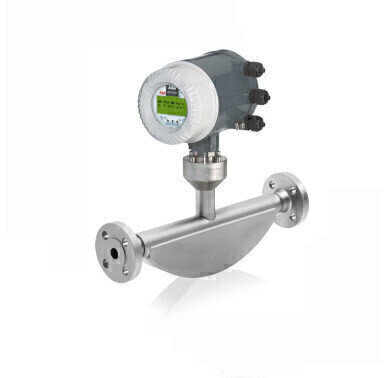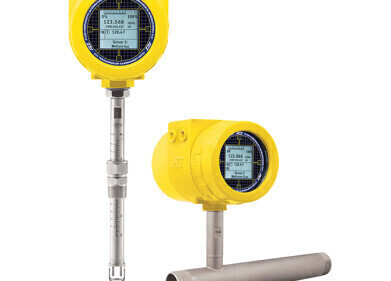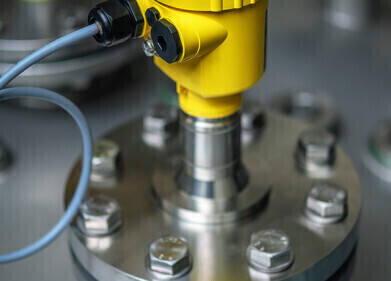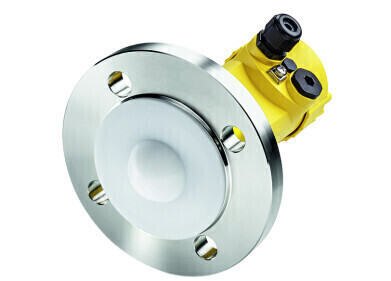Flow Level Pressure
Why choose Coriolis?
Nov 19 2014
Many industrial processes depend on the mass, rather than the volume, of the materials reacting together. Yet in the case of reacting liquids and gases, most flowmeters don’t measure mass flow rates. Only one kind of flowmeter directly measures mass flow rates of both liquids and gases – the Coriolis flowmeter. David Bowers, for ABB’s UK Measurement Products business, explains why Coriolis flowmeters are increasingly the device of choice in a growing range of flow measurement applications.
Commercial Coriolis flowmeters are a relatively recent innovation, having emerged in the mid-to-late 1970s. Steady technical improvements since then have greatly increased their accuracy and acceptance in the process industries. Today, direct mass flow measurements account for up to 20 percent of worldwide flowmeter applications.
How they work
A Coriolis flowmeter requires a force acting on a tube carrying a flowing fluid. This force actually deforms tubes through which the fluid flows. The amount of deformation depends directly on the mass flow rate through the tubes. Signals from sensors measuring this deformation provide a direct indication of the mass flow rate.
In Coriolis flowmeters the concept of angular momentum comes into play. Angular momentum is a function of the point’s radius from the axis, the mass at the point, and its speed. The further the mass from the axis, the faster its rotational speed and the greater its angular momentum.
This is demonstrated in the diagram below, which shows a counter clockwise rotating carousel viewed from above. The length of the arrows indicates the relative magnitudes of velocities of the points on the diameter.
If you’re at the edge of the moving carousel, your speed is relatively high compared to standing anywhere nearer to its centre. For example, if the carousel has a radius of 10 feet and it makes one revolution in five seconds, then you move 20π feet (about 63 feet) in five seconds (or about 12.6 feet per second relative to a person standing off the carousel. Any point nearer to the centre represents a smaller radius and a slower rotational speed.
If you (the mass) start to walk towards the moving carousel’s centre, decreasing your radius from the axis, your rotational speed slows. Your angular momentum also decreases. Conversely, as you walk away from the centre, your angular momentum would increase.
Coriolis flowmeters take advantage of this change in angular momentum as a fluid flows away from and back towards an axis of rotation.
Coriolis flowmeter construction
When this principle is applied to measuring process mass flow rates, the flowmeters must rotate the fluid. In practice they rotationally oscillate the fluid, which produces equivalent Coriolis forces. Tube designs are U-shaped, S-shaped, or straight.
In U-shape or S-shape tube designs, the fluid moves away from and back towards the axis of oscillation, resulting in a changing angular momentum of the fluid. As the tube oscillates up, the fluid mass flowing into the U-tube will resist its increasing angular momentum (because of the inertia of the fluid mass) and push down against the tube. As the fluid moves back toward the axis, it resists its decreasing angular momentum, pushing up on the tube. These opposing forces depend on the fluid’s mass. They deform the U-shaped tube with a twisting action.
The two opposing forces twist the tube first one way, then the other, with each oscillation cycle. Waveform outputs from the pickup sensors are sine waves, reflecting the oscillation frequency. Measuring the magnitude of this deformation amounts to measuring the mass flowrate.
With zero flowrate, the two sine waves from the pickups are exactly in phase since the fluid’s angular momentum remains constant and no twist occurs. As flow increases, the phase difference between the two sine waves also increases. This phase difference is the measure of the mass flow rate through the Coriolis flowmeter. The greater the mass flow, the greater the twist, and the greater the measured phase difference.
Most often Coriolis flowmeters incorporate identical dual tubes oscillating in opposite directions. The flow from process piping splits in two as it enters the flowmeter. This provides a more balanced design, making the meter more resistant to external vibrations and temperature swings. Sensors mounted on the tubes measure their relation to each other rather than to a fixed plane.
Straight tube designs operate in a similar manner. The vibrating tube is fixed at its ends, creating two rotating reference frames. The rotations at the inlet and outlet sides are in opposite directions, creating opposing Coriolis forces that distort the tube.
Benefits of Coriolis flow measurements
The Coriolis metering principle is independent of the fluid's density, temperature, viscosity, pressure, and conductivity, making it independent of Reynolds number. It's also independent of the upstream and downstream flow velocity profiles. Consequently, a Coriolis flowmeter does not require straight runs of piping on either side of it, making it suitable for asymmetric velocity profiles.
In addition, in most designs, the tube oscillates at its resonant frequency. This frequency depends on the meter tube geometry, the characteristics of the flowmeter materials, and the mass of the fluid in the meter tube. With knowledge of these properties, this frequency provides a bonus measurement of the fluid density within the tube. Separately, the flowmeter includes a thermal sensor to account for dimensional and elasticity changes of the tube with fluid temperature.
Flowrate calibration may be done with any convenient liquid or gas, such as water or air. To calibrate for density, the tubes may be simply filled with fluids of known densities to note the resonant frequencies attained.
Today’s Coriolis flowmeters are highly accurate. Accuracies of the new ABB CoriolisMaster flowmeter models, for example, range from 0.1 to 0.4 percent of reading for liquids and 0.5 to 1 percent of reading for gases. High accuracies make Coriolis flowmeters obvious candidates for custody transfer applications. They also fit applications such as material balances and blending by weight. Since these meters can monitor a variety of different fluids, they also suit batch operations and tanker truck loading and unloading.
Summary
The Coriolis flowmeter makes it possible to simultaneously measure the mass flow rate, fluid density, and temperature. Other measurement values can be derived from this information, such as the volumetric flow rate and percent concentration. Coriolis flowmeters are a good choice for a variety of flow measurement applications in the oil and gas, chemical, power, and food and beverage industries.
ABB has extensive experience in the design, manufacture, supply and lifetime care of a wide variety of metering technologies, including Coriolis mass flowmeters. For more information, or advice on how to select the appropriate flowmeter for your application, email or call 0870 600 6122 ref. ‘Flow advice’.
Digital Edition
PIN 25.1 Feb/March
March 2024
In This Edition Safety - The technology behind the ION Science Tiger XT - Safety with ammonia and LOHCs as hydrogen carriers Analytical Instrumentation - Discussion on new tribology te...
View all digital editions
Events
Apr 22 2024 Hannover, Germany
Apr 22 2024 Marrakech, Morroco
Apr 22 2024 Muscat, Oman
Apr 22 2024 Rotterdam, Netherlands
Apr 23 2024 Singapore


















